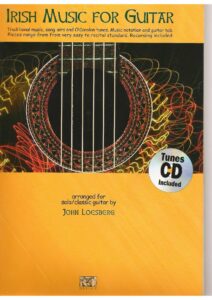Table of Contents
Come join us now, and enjoy playing your beloved music and browse through great scores of every level and styles!
Can’t find the songbook you’re looking for? Please, email us at: sheetmusiclibrarypdf@gmail.com We’d like to help you!
‘Fairytale of New York’ played at Shane MacGowan’s funeral (2023) (Pogues)
Please, subscribe to our Library.
If you are already a subscriber, please, check our NEW SCORES’ page every month for new sheet music. THANK YOU!

Best Sheet Music download from our Library.
The performance of “Fairytale of New York” at Shane MacGowan’s funeral on December 8, 2023:
The performance of “Fairytale of New York” at Shane MacGowan’s funeral on December 8, 2023, in Nenagh, County Tipperary, Ireland, was a profoundly moving, poignant, and fitting tribute that captured the essence of the man and his most iconic work.

Here’s why it resonated so deeply:
- His Masterpiece: Written by MacGowan and Jem Finer, “Fairytale of New York” is arguably The Pogues’ most famous song and Shane’s crowning achievement as a songwriter. Playing it was an acknowledgment of his creative genius.
- The Song’s Essence: The song perfectly encapsulates the themes that defined MacGowan’s writing – raw humanity, beauty found in grit and imperfection, love intertwined with pain and disillusionment, Irish immigrant experience, and a deep, melancholic romanticism beneath a tough exterior. Its bittersweet core mirrored Shane’s own complex life.
- Juxtaposition & Catharsis: On the surface, it’s a Christmas song, but its heart is a devastatingly honest portrayal of a broken relationship and shattered dreams. Playing it at a funeral, especially Shane’s, created a powerful juxtaposition. The upbeat, festive melody contrasted with the somber occasion and the song’s own lyrical despair, leading to a profound catharsis – acknowledging sadness while celebrating life and art in all its messy glory.
- Communal Singalong: Reports describe the congregation rising to sing along. This transformed the song from a performance into a shared, communal act of remembrance and celebration. It wasn’t passive listening; it was active participation in honoring Shane through his words and music. The slightly ragged, emotional singing captured the spirit of a Pogues gig.
- Embracing the “Flaws”: The song, like Shane himself, is beloved despite (or perhaps because of) its roughness, its swearing (“you scumbag, you maggot”), and its unflinching look at darkness. Playing it in a church, uncensored, felt like a defiant embrace of Shane’s authentic, unfiltered spirit. It refused to sanitize his memory.
- A Celebration, Not Just Mourning: While deeply sad, the choice reflected the Irish tradition of celebrating life at a funeral. “Fairytale,” with its energy and ultimate resilience (the hopeful “I kept them with me” line), was a perfect vehicle for this. It acknowledged the pain but focused on the beauty and enduring power of what he created.
- The Performers: While specific musicians weren’t always named in reports, the act of it being played live (often described as by friends/musicians present) added a layer of intimacy and tribute from his musical community. Hearing those opening notes ring out in the church was instantly recognizable and emotionally charged.

The Context:
- The funeral was a major event, attended by music legends (Nick Cave, who also performed a reading, Johnny Depp, Bono, Bob Geldof), Irish cultural figures, politicians, and countless fans.
- It blended traditional Irish Catholic elements (Mass, hymns like “Haunted by the Ghost”) with powerful, personal tributes reflecting Shane’s unique life and legacy.
- Nick Cave’s haunting performance of “A Rainy Night in Soho” was another deeply moving musical moment.

Browse in the Library:
Or browse in the categories menus & download the Library Catalog PDF:
Playing “Fairytale of New York” wasn’t just playing a hit song. It was:
- Honoring his art: Recognizing his greatest creation.
- Celebrating his spirit: Embracing the rawness, beauty, chaos, and resilience that defined him.
- Creating catharsis: Allowing grief and joy to coexist through shared music.
- A final, defiant singalong: Letting the congregation lift their voices in his words, one last time, sending him off with the sound that made him immortal.
The image of mourners, from global stars to local friends and family, standing in a small Irish church singing “the boys of the NYPD choir…” through tears and smiles, perfectly captured the complex, magnificent, and utterly human legacy of Shane MacGowan. It was a moment of pure, unfiltered, and unforgettable tribute.
Search your favorite sheet music in the category of Rock, Pop, Folk and Popular Music.
A Musical Analysis
“Fairytale of New York” by The Pogues is a genre-defying masterpiece, blending several styles with distinctive harmonies that contribute significantly to its raw, emotional power.
1. Primary Musical Style:
* Irish Folk-Punk: This is the core. It takes the instrumentation (fiddle, tin whistle, accordion, acoustic guitar, driving bass), rhythmic energy, and storytelling tradition of Irish folk music and injects it with the rawness, urgency, distorted energy, and anti-establishment spirit of punk rock. Shane MacGowan’s distinctive, slurry vocal delivery is a key element of this punk/folk fusion.
* Christmas Song (Subverted): Structurally and instrumentally, it uses elements of a traditional Christmas ballad (piano intro, choral backing vocals hinting at a carol, festive bells, the lyrical setting). However, it brutally subverts the genre’s typical sentimentality and cheer with its gritty, tragic narrative.
* Pub Rock/Shanty Energy: The song has the feel of a raucous, communal singalong you’d hear in an Irish pub, or even a sea shanty, amplified to punk intensity. The “drunk choir” backing vocals enhance this.
* Ballad: At its heart, despite the energy, it’s a narrative ballad telling a specific, heartbreaking story.
2. Key Harmonic Characteristics:
The song primarily revolves around the key of G Minor, which immediately establishes a melancholic, bittersweet, and slightly dark foundation – perfect for its themes. Here are the crucial harmonic elements:
- Chromatic Descending Bassline (Intro/Verse): This is one of the most recognizable features.
- The intro piano plays: G – F# – F – E over the chords. This bassline creates immense tension, yearning, and a sense of inevitable decline or falling.
- The chords implied/supported by this bassline are typically variations of G minor (i) and E major/b7 (V/V or V7 of VI). The specific progression often heard is:
|: Gm | Gm | D/F# | E7 :|(or variations like|: Gm | Bb/D | D/F# | E7 :|) - The E7 chord (V7 of VI) is a strong dominant chord pointing towards A minor (the relative major’s relative minor), but it often resolves deceptively or circles back, adding to the unresolved tension. This chromatic descent (G-F#-F-E) is pure musical storytelling, mirroring the characters’ descent.
- Shift to Relative Major (Chorus): The chorus provides a powerful release and temporary lift by shifting to the relative major key, Bb Major.
- The core progression is often a simple, driving:
|: Bb | F | C | F :|(I – V – II – V in Bb). - This shift from G minor’s melancholy to Bb major’s brighter, more anthemic quality creates the song’s signature bittersweet catharsis. It’s the moment of fleeting hope or nostalgic memory amidst the despair. The melody soars here.
- The core progression is often a simple, driving:
- “The Boys of the NYPD Choir…” Section: This section returns to the feel of the intro/verse, centered around G minor and that descending chromatic motion (
Gm - [implied descent] - E7), often punctuated dramatically before launching back into the chorus. - Use of Dominant 7th Chords: Dominant 7ths (like E7, Bb7, F7) are used frequently, adding bluesy tension, urgency, and a slightly unresolved, gritty feeling that suits the punk-folk aesthetic and the song’s emotional rawness.
- Modal Flavor (Irish Folk Influence): While functionally tonal (G minor/Bb major), the heavy use of fiddle melodies, ornamentation, and the overall feel often leans towards Dorian mode (particularly over the G minor sections), a mode common in Irish folk music. Dorian mode (Dorian on G: G A Bb C D E F G) has a slightly brighter minor quality than natural minor due to the raised 6th (E natural instead of Eb). This adds a specific Celtic flavor.
- Harmonic “Roughness”: The Pogues’ performance style embraces a certain harmonic “roughness”:
- Drunken Choir Effect: The massed, slightly out-of-tune backing vocals (“the boys of the NYPD choir…”) create deliberate dissonance and a chaotic, boozy atmosphere.
- Instrumental Grit: The accordion, fiddle, and distorted guitars don’t always play perfectly “clean” harmonies; there’s an edge and clash that’s integral to the folk-punk sound.
Why these harmonies worked so powerfully at the funeral:
- Instant Recognition: The iconic descending bassline and shift to the major chorus are unmistakable.
- Emotional Catharsis: The move from the tense, dark G minor verses to the anthemic, hopeful Bb major chorus mirrors the journey from grief to celebration of life – the core purpose of an Irish funeral.
- Communal Singing: The strong, relatively simple chord progressions (especially in the chorus) are perfect for a large group of people to sing along to, turning the funeral into a shared act of remembrance and defiance.
- Embracing Imperfection: The song’s inherent harmonic “roughness” and emotional rawness perfectly reflected Shane MacGowan’s own spirit and artistry. Playing it uncensored, with its swearing and grit, in a church was a profound acceptance of who he was.
- Bittersweet Core: The G minor foundation, even in the midst of the chorus’s lift, ensures the underlying feeling is one of profound loss and melancholy, fitting the occasion.
The genius of “Fairytale of New York” lies in how its complex, emotionally charged harmonies – blending Irish folk melancholy, punk energy, and Christmas ballad structure – perfectly serve its devastatingly beautiful story. At Shane’s funeral, these same harmonies provided the perfect soundtrack for collective grief, celebration, and a final, defiant singalong to his masterpiece.
